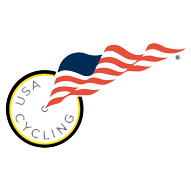As competitive cyclists, our base training generally starts in November. This means that we often train through wet Northern Californian winters. Fitting in a good base is essential to having a successful season, and in order to that, you will most likely be forced to ride in some nasty weather. Here are some tips for staying safe and warm in a cold, wet winter.
Choosing to ride
Planning and preparation are the most important aspects of winter riding. When you are planning a week of training, be sure to take a look at the weather forecast so that you can decide ahead of time what your training will look like in relation to the weather. If the week ahead looks clear aside from one or two days of rain, consider organizing your training so that the shorter days of training will coincide with the rainy days. Also consider choosing an indoor trainer workout.
Pay close attention to the temperature along with the chance of rain. When the temperature drops below 50 degrees with rain, it becomes very difficult to stay warm, even with good equipment. Keep in mind that Northern California has lots of microclimates, small areas that are significantly warmer or colder than the surrounding area. This means that it could be a comfortable 50 degrees at your house, but a not so comfortable 40 degrees for a good portion of your ride. For example I once started in downtown Santa Rosa at around 50 degrees. By the time I got to the top of Calistoga road on the way to Napa it was snowing. I was not dressed properly for snow, and had a very cold, miserable ride.
If you are training seriously for next season, you will eventually be forced to ride outside when it is raining, preparation once again, is the key to success.
Choosing your clothing
The number one rule for choosing my rainy clothing is no cotton next to my skin ever. Cotton loses all of its insulation when wet. Always choose a synthetic material or wool. The second rule is that there is no such thing as waterproof clothing. You will eventually be wet, which is why choosing synthetic materials that retain their insulating properties is so important. Finally, you should aim to keep as much skin covered as possible.
Here is a rundown on what you should consider wearing:
Head
Always keep your head covered with at least a cycling cap. Use some sort of insulated cap that covers your ears when it is less than 55 degrees. If you have an aero road helmet (not a Time Trial helmet), or a helmet cover for your Lazer helmet, use it. Eye protection is especially important when it is raining because there is a much higher chance of ending up with road grime or water spray in your eyes. Choose clear or lightly tinted lenses so that you can see clearly in the lower, flat light that accompanies rain.
Neck
Use a neck gator that you can pull up over your face on descents. Coach Laura’s original hand made, stylish hats are prefect for this. Even just a synthetic bandana can make you much more comfortable.
Core
Keeping your core warm is extremely important. Having cold hands or feet is uncomfortable, but a poorly protected core can quickly lead to hypothermia. Dressing in layers so that you can adjust your clothing is important. Use an undershirt, then if it is very cold, a long sleeve jersey and a thick jersey, or thermal vest/long sleeve. Finally, choose an outer “waterproof” shell. Most Jackets will eventually soak through, but a good one will keep you dry for a long time and will keep wind out and body heat in. A cheap, clear plastic jacket can actually work okay as long as you have enough layers underneath. Depending on the temperature, you can get away with arm warmers and a normal jersey, then a thermal vest. Keep in mind that once it is below 60 degrees, you will likely need more than just a jersey and arm warmers underneath your jacket. Some sort of insulated long sleeve, or thermal jacket/vest will be needed.
Legs
Leg warmers or long thermal bibs are best here. Knee warmers leave too much skin exposed. Remember that embrocation will not actually keep you warm, it just makes you feel warm. Having good leg warmers is important, especially for your knees. The ligaments and tendons in your knees receive relatively little blood flow, so they require outside insulation to keep warm. Cold ligaments and tendons are easier to injure, so be sure to protect your knees.
Feet
Remember, no cotton next to your skin. If you have enough room in your shoes, you can actually try to wear a thick wool sock. Next you can either layer on a couple pairs of shoe covers, or use a thick neoprene bootie. If you don’t have a lot of options, you can try using a plastic baggie over your socks. Test out a few options and find what works, having cold feet or hands can make a wet ride extremely uncomfortable. Remember, an outer water resistant bootie can keep your feet dry temporarily, but you need some insulation to keep warm when your shoes are inevitably soaked through.
Hands
Find a pair of gloves that will stay warm when wet, usually these end up being fairly thick. Another good option is neoprene gloves (originally intended for SCUBA, but there are some made for cycling), these are great if you know it will be raining for your whole ride. Try stuffing an extra pair of gloves under your jersey on long rides so that you can have a fresh pair for the last hour or two. Don’t underestimate the power of keeping your extremities warm, cold hands or feet can make even a short cold ride feel unbearable.
Choosing your route
When you are deciding where to ride there are a few things to keep in mind. Pay attention to the temperature and think about any microclimates you may encounter. If it is cold enough you may encounter snow at the top of some climbs so dress accordingly, or avoid those climbs. Consider choosing a rolling ride without big climbs. This will allow you to avoid big body temperature swings from climbing then descending. You can also find a short loop near your house and ride multiple loops. This will make it easy to bail on the ride if the weather gets significantly worse, or you find that your clothing choices are inadequate. If you are using any equipment for the first time, choose the short loop option so that you can make sure your equipment works. Remember that you can always simply choose to do the interval portions of your ride on the trainer.
Staying Safe
Road Hazards
When the roads are wet, there are many road hazards that you do not normally have to worry about. Anything metal in the road such as manhole covers will provide no traction. Thick paint lines, leaves on the ground, and cattle guards should also be avoided. Avoid riding through puddles, as they could be hiding a deep pothole. Also remember that drivers will have a harder time seeing you, a red blinking rear light and a highly visible jacket are a great idea.
Bike Handling
Riding in the rain will always be more dangerous. You will have less traction and poor breaking. You will have to approach corners more slowly. It is also especially important to avoid braking in the middle of a corner, or when riding over paint lines, manhole covers etc. If you do ride over any cattle guards, paint lines, etc, keep your bike completely straight up and down. If your bike is leaned over, especially on a cattle guard, your bike can easily slide out. Choose a wider tire if possible, and lower tire pressure to increase traction.
Taking care of your bike
Riding in the rain is much harder on your bike. Be sure to at least rinse off your bike after a rainy ride and re-lube your chain. See the Team Swift article on washing your bike for detailed instructions. Keep a close eye on your break pads and the breaking surface on your wheels as these will both wear out much faster while riding in the rain. Be sure to replace your chain before it becomes completely worn. Using front and rear fenders on your bike makes a big difference by keeping groundwater off of you. There are many options for easily removable fenders that make riding in the rain much for comfortable. If you are riding with a group you should always at least have a rear fender so that your riding partners are not being sprayed in the face while behind you.
The hardest part about riding in the rain is getting started! If you are dressed right and plan appropriately, riding in the rain will be a much more pleasant experience.
Clothing list for rain
- Wool socks
- Shoe covers
- Leg warmers
- Thermal bibs
- Thick undershirt
- Thermal vest
- Long sleeve jersey
- Arm warmers
- Water resistant jacket
- Neck gator
- Cycling cap














